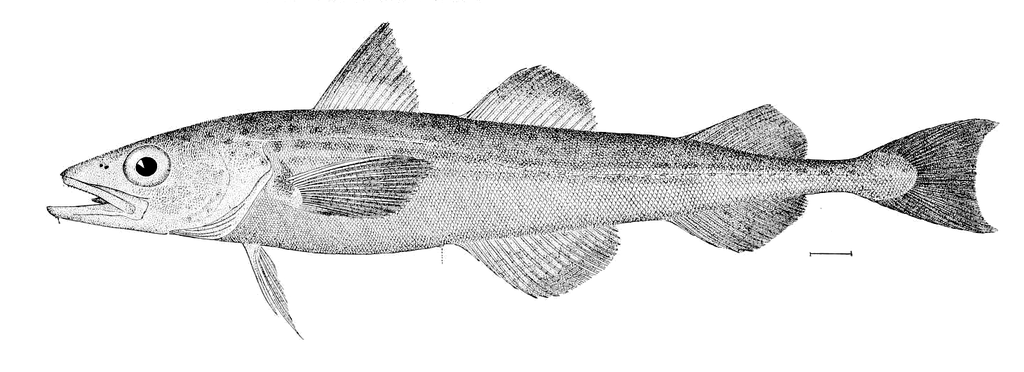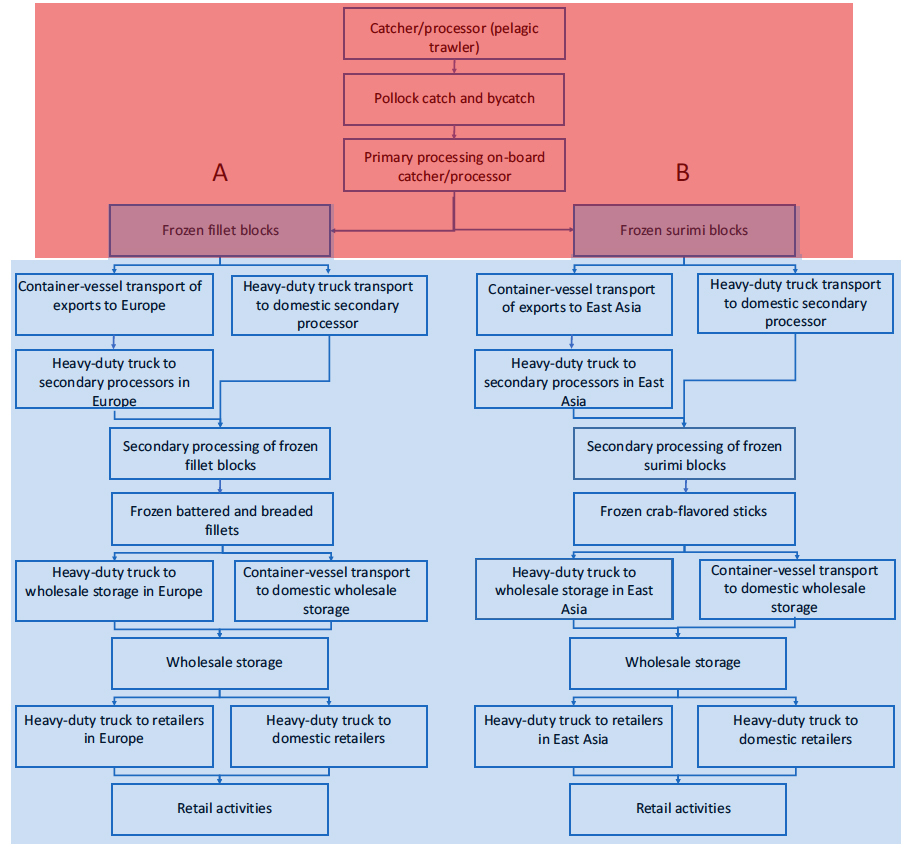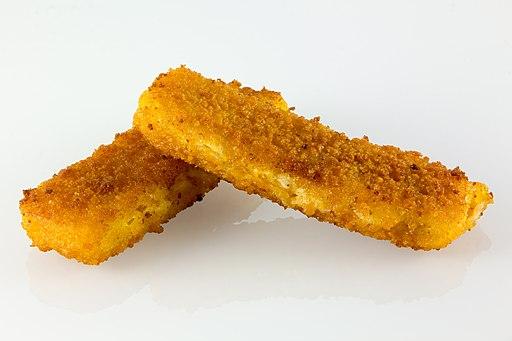The studies of GHG created from fishing have focused primarily on fuel usage by ships while fishing, resulting in a “focus on a narrow group of pollutants (e.g., well-mixed GHGs including CO2, CH4, and N2O)…”. Moreover, the use of an extended timeframe, 100 years, does not account for the short-term impacts of other gases, which have short atmospheric lifetimes and can have strong warming or cooling effects. Black carbon is one such pollutant that can result in short term warming while SO2 results in cooling. Finally, in calculating a “sea to table” scenario, one must also consider downstream environmental costs of processing and delivery to the consumer.

The Fishy Study
 The researchers followed the sea to table life of this guy, the Alaska Walleye Pollock, whose fishery is the eastern Bering Sea. They are widely distributed for consumption as fillets and surimi. I know that last one threw me too. Surimi is frappe of Pollock used in much the same way as the nugget of the Chicken is used in chicken products. You may have walked by surimi in the dairy case as imitation Crab sticks. And while the fillets and surimi have collective harvesting experience, and share equally in markets, making a fillet has different downstream environmental costs than creating a frappe or an imitation crab part. Here is what sea to the table visualized. The purple is the intermediary product fillet or surimi in frozen blocks. Let’s spend a minute looking at the fishing part in pink.
The researchers followed the sea to table life of this guy, the Alaska Walleye Pollock, whose fishery is the eastern Bering Sea. They are widely distributed for consumption as fillets and surimi. I know that last one threw me too. Surimi is frappe of Pollock used in much the same way as the nugget of the Chicken is used in chicken products. You may have walked by surimi in the dairy case as imitation Crab sticks. And while the fillets and surimi have collective harvesting experience, and share equally in markets, making a fillet has different downstream environmental costs than creating a frappe or an imitation crab part. Here is what sea to the table visualized. The purple is the intermediary product fillet or surimi in frozen blocks. Let’s spend a minute looking at the fishing part in pink.
"The primary processing phase of the seafood supply chain includes on-board production of intermediary products and storage of the product at a wholesaler."
Here we are talking about fuel, electrical costs including refrigeration, materials, and environmental costs associated with materials and refrigerants. There are so many variables and difficulties in calculating numbers with a large fleet of varying weight, capacity, and catch. As the authors write, "Carbon footprints come with large uncertainty in data and methods.” Since all of the calculations are 1st-order estimations, I did not put a lot of stock in the numbers, instead considering the ratios and interactions as a good initial approximation.
The secondary processing, the part in blue, is what happens to those blocks of frozen fillet and surimi - all the environmental impacts in creating that final product in your home. There are transportation costs for sea and land crafts with differing fuel needs and supplies, as well as the costs of refrigeration and coolants. At this point, the researchers made use of cost information about a different white fish that is similarly transformed into battered and breaded fillets. Not the worry, the crab flavored sticks, our friend surimi, was retained for comparison, but again with different costs for processing, packaging, and storage. Finally, there were the costs of retail activity, again those refrigeration units and storage costs.
The Fishy Results
The study considered two different products, sent into five different markets [1], over a “short-term horizon on 20 years and a long-term horizon of 100 years.
- For both products, the downstream costs of processing doubled the environmental costs of fishing. Those costs varied by both market and time horizon ranging from 0.55 to 0.66 kg CO2 for each kg of the finished product.
- In processing, the majority of environmental impact came from product ingredients and electrical consumption. Slightly over half of the environmental impact comes from product ingredients. And once again, what was being made altered the ratios, ingredient costs were higher for battered fish, while electrical spending was less.
- While CO2 is the primary environmental “warming component,” other materials, specifically black carbon (soot), followed by methane, play significant roles. The percentage contribution by black carbon and methane flipped when considering only greenhouse gases versus all the possible air pollutants involved; their share of warming was decreased when considering a long time horizon and varied with markets.
- NOx is the primary environmental “cooling component,” followed by SOx. Their contributions too varied with the markets, and time horizon.
- Counter-intuitively, the exportation of these products reduced their environmental impact over domestic use – this was due to transoceanic shipping, where the fuel resulted in “higher amounts of cooling species than the domestic products.”
- 40% of transoceanic shipping occurred in areas where fuel composition was regulated to twenty-four fold lower levels of sulfur. Sulfur, which acts as a cooling agent in the atmosphere, therefore, had less of a positive environmental impact in these regulated areas.
- When considering only greenhouse gases, the estimated environmental burden was 1.6 to 2.6 times greater than when all pollutants, including those that cool the atmosphere were considered. And that multiplier was greater over 100 years than 20 years
The numbers should be taken lightly. Look at how many variables could be involved in creating a model for the production of battered fish and imitation crab sticks. And I am only mentioning some of the more pertinent variables. [2] And other, often uncounted variables, produced more variation. In performing their sensitivity analysis, researchers found that the environmental costs were affected by whether products were shipped on sea or land (differences in fuel composition), as well as storage costs, which varied by a country’s electrical grid. The authors also acknowledge other environmental variables not measured; for example, the relative abundance of pollack and water temperature had an impact on where and how long fishing takes.
Models
All models are simplifications, and all models are wrong. But iterative models can take into account more and more of the factors and their interplay. Not including the content and effect of atmospheric cooling pollutants like NOx and SOx alter conclusions. Not considering the entire range of source to table inputs changes findings, after all, nearly 70% of the environmental effects in this study were from processing, not fishing.
For me, the paper is a cautionary tale about science and policy. Unfortunately, many of our regulators and legislators are not equipped to consider the nuance of studies, and they are rarely presented to them as other than our “best possible” science.
[1] The markets include Germany, the Netherlands, the United States, Japan, and South Korea. Each market, the retail destination, has varying transportation costs, which account for significant variability of environmental impact.
[2] The researchers included such variables in their calculation as packaging film, liner material, refrigerant leakage, lubricating oils for equipment, and detergents
Source: Climate forcing by battered-and-breaded fillets and crab-flavored sticks from Alaska pollock Elementa Science of the Anthropocene DOI: 10.1525/elementa.386
Picture of Pollack Courtesy of Goode G. B. The Fisheries and Fishery Industries of the United States. Section I. Natural History of Usefull Aquatic Animals. – Washington: Government Printing Office, 1884. Plate 60




